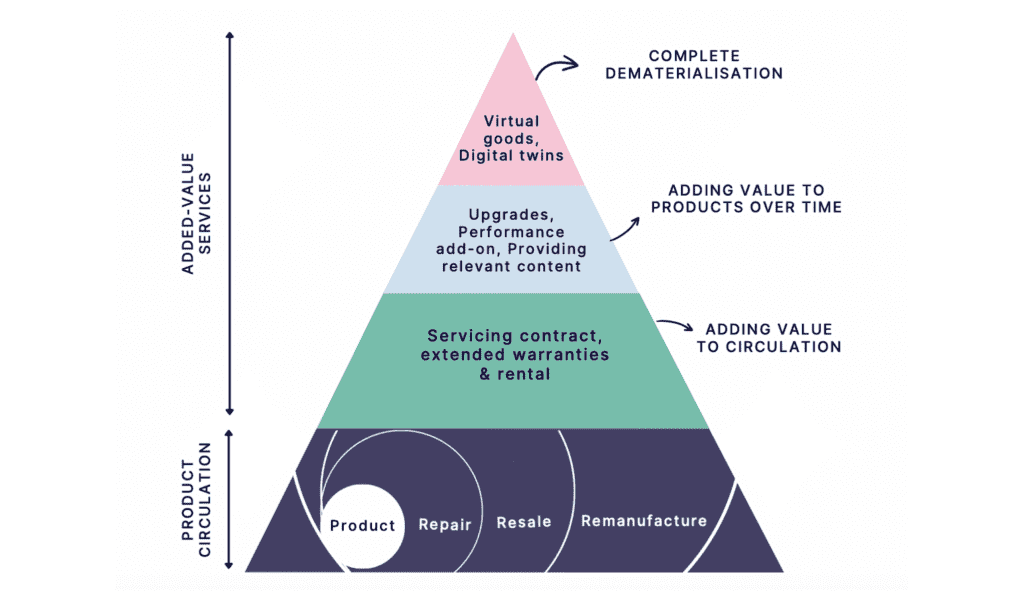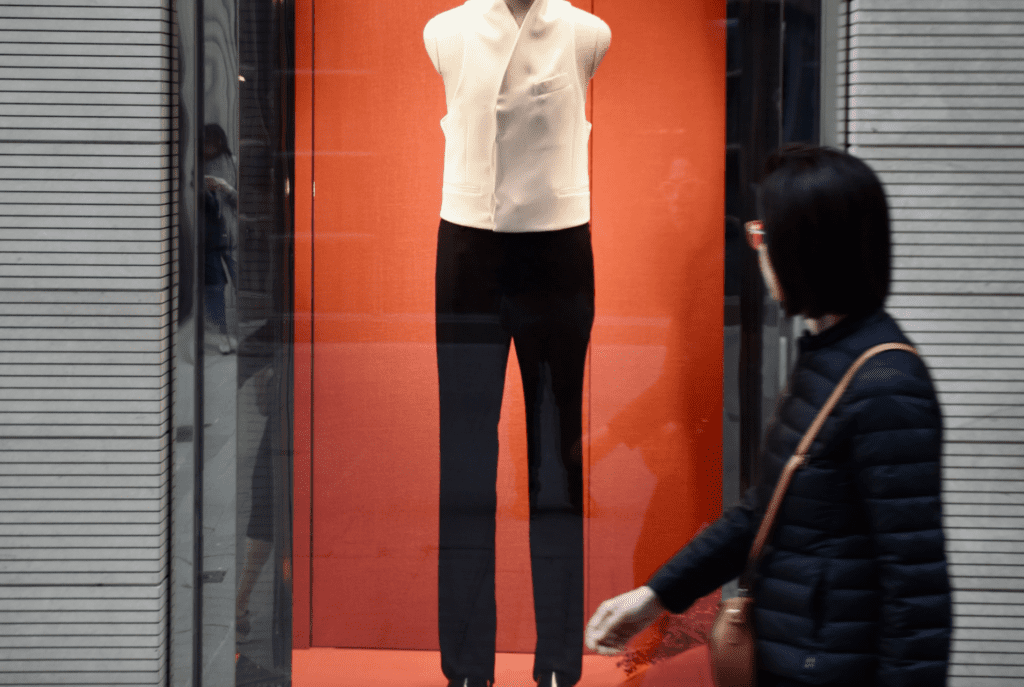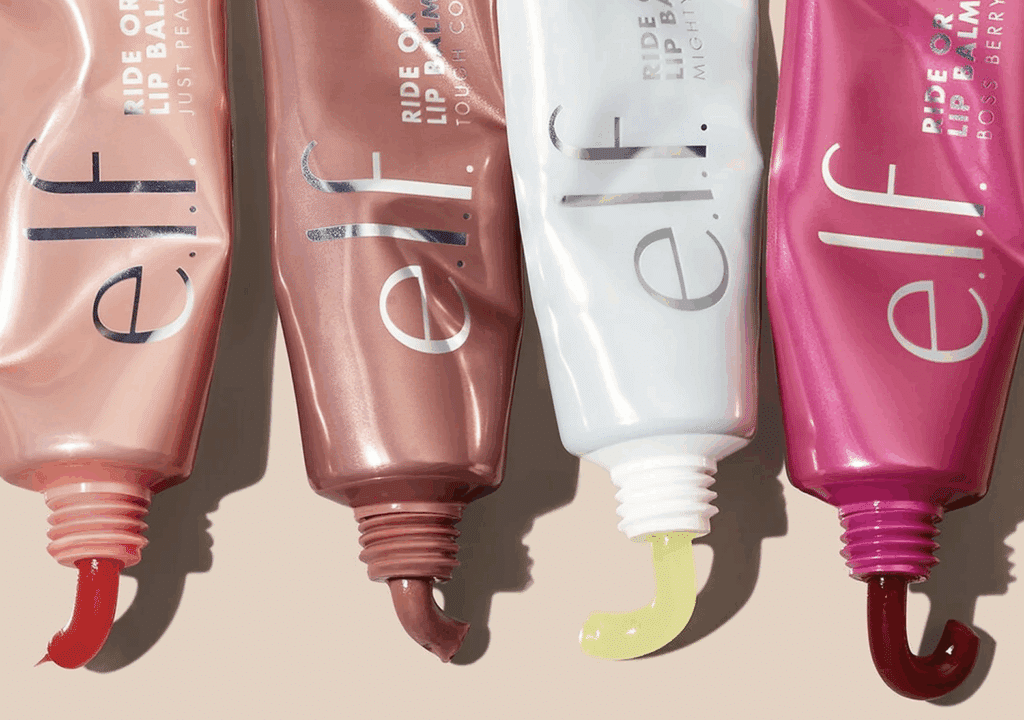In light of enduring climate concerns, companies in fashion, luxury, and beyond are being urged by consumers and driven by new regulations to reconcile their economic growth goals and environmental ambitions. In a newly-released report, Arianee dove into what a shift away from retail’s current growth model – which requires companies to find strategies to consistently sell more products – might look like for companies, including those in the fashion/luxury segment, stating that such a shift may be possible if companies opt to explore new models that enable them to decouple the relationship between revenues and production.
The good news, according to Arianee, is that there are already companies – from Rent the Runway to Tesla – that are exploring ways to create this decoupling (i.e., to generate new revenues without consistently creating new stuff). In particular, the French digital certification platform highlights product circulation (namely, repair, resale, and remanufacturing) and value added services as critical avenues for companies looking to begin to consider the value of a service-based – versus a production-based – economy.
Product circulation: Reflecting first on product circulation, Arianee states that this is where “a lot of exploration and scaling is already happening and where the economic case is increasingly clear in many industries.” Repair, resale, and remanufacturing models, for instance, allow companies to create multiple revenues from single products. However, it cautions, saying that in order “to unlock their full benefits, companies need to see [these avenues] as core to their business and customer strategies.”

According to Arianee, among the top three ways for companies to engage in product circulation are …
> Repair services: These are a way for brands to extend the life of products and create new sources of revenue while increasing customer satisfaction, per Arianee. Not limited to in-house repairs efforts, which are proving to be increasingly popular in the luxury segment, Arianee states that brands can sell spare parts or consumables to their customers to empower them to repair their products themselves. It notes, for example, that brands can model these initiatives after iFixit, which has partnered with a number of brands like Google or HP to provide guides, tools, and genuine spare parts for people to repair their devices.
(In terms of the sale of spare parts, this could benefit brands from a trademark perspective, enabling them to maintain rights in marks even when certain models are discontinued. The Court of Justice of the European Union previously shed light on this in a case that centered on Ferrari’s Testatrossa trademark.)
The role of regulations, like the ones in France or Sweden that aim to lower the costs of repairs, should not be overlooked here in terms of encouraging adoption. At the same time, right to repair regulations (in the U.S. and beyond), which require companies to give consumers the ability to repair products they have purchased, “are a great way to develop this sector, as the feasibility, cost, and quality of repairs are strongly conditioned by design and production choices,” Arianee asserts.
> Resale: The secondary market is notable here, as it enables companies to potentially generate revenue on more than one occasion from a single product, while also allowing customers to monetize what they already own and access quality goods at a cheaper than retail price. In terms of “emerging opportunities” for brands, Arianee maintains that by creating partnerships with resale platforms (or by hosting resale programs in an in-house capacity), brands can generate revenue by way of royalties.
Of note here, of course, is the issue of authenticity, as “for buyers, the appeal of resale comes from trusting that the platform lists authentic products with, when relevant, verifiable service history,” per Arianee. In addition to being able to market products as authentic in order to build consumer trust, traceability of products is likely to become increasingly critical in the event that courts require resale platforms to be able to substantiate their claims about product authenticity with documentation, which is what Chanel is pushing for as part of the injunction it is seeking in its case against What Goes Around Comes Around.
> Remanufacturing: Efforts aimed at restoring the function of existing products is also important, according to Arianee, which says that by remanufacturing products, “companies can bring old products back to their original performance, or to make new products” – usually in a limited-edition capacity and at higher retail prices – from “used components.” In addition to “significantly reducing the environmental impact of products,” remanufacturing can also “generate high margins” for brands. For an example of how companies can generate revenues “from inventory, or returned items, using craft and creativity to transform them into more desirable products,” Arianee points to Ferragamo’s Icon-Up project in furtherance of which the Italian leather goods brand reinvented shoes from their inventory to resell.
Arianee also notes the potential use of AI here, arguing that by automating solution identification, companies can use AI to “help identify solutions to reinvent products in a commercially viable way.”
Value added services: Turning its attention to another way for brands to benefit from a service-based model, Arianee asserts that offering value added services allows companies to create revenues from existing products by “opening decoupled development pathways,” and to “move beyond discreet customer interactions towards continuous ones.” While value added services is the more emerging opportunity, “some pioneers” – like Apple, BMW, Tesla, Rent the Runway, etc. – “are already exploring how to create revenues from existing products.”
Specifically, solutions in the space can include extended warranties, servicing contracts, rental initiatives, community activations, access to relevant content, and other connections between physical and digital worlds.
THE BOTTOM LINE: Taken together, these efforts can results in a “realignment of goods industries with shifts in consumption patterns towards services,” and present companies with the opportunity to “serve customers’ ‘higher’ needs,” while also creating “low marginal costs sources of revenues.”














